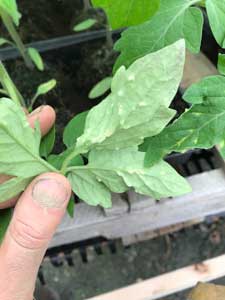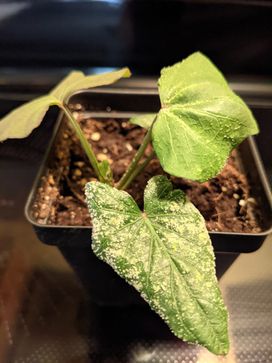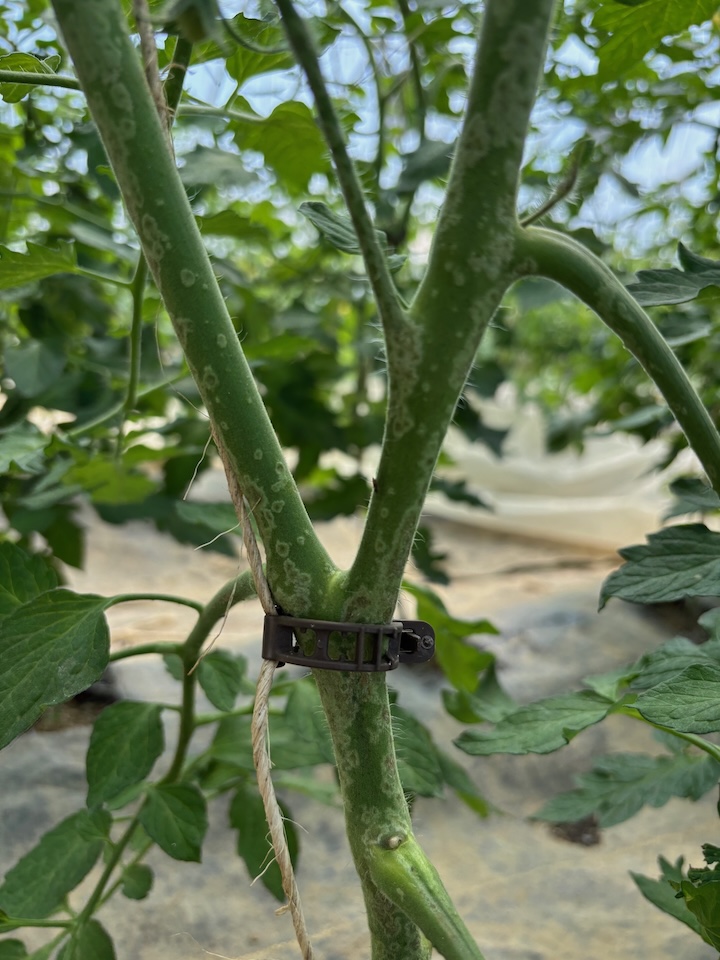


Pest: Edema
Pest/disease identification and lifecycle, most common symptoms and crops affected:
Edema usually shows up on tomato seedlings when they have been waiting through lots of cloudy cold days. It is also a common problem in plants in the cabbage family, and some house plants.
Blisters or bumps appear on the surface of the leaves, usually the underside. The swellings initially appear pale green, but they can erupt and turn yellow, brown or even black. Eventually, corky spots appear as the leaves heal over with scar tissue, and this is often the stage at which growers notice the condition. Older leaves are more often affected than younger leaves.

Edema is a physiological disorder that develops when a plant absorbs water faster than it can be lost from the leaf surface. Excess moisture builds and the blisters form. This is most commonly induced when transpiration is limited. Transpiration (the natural loss of water from the plant) is reduced by cloudy days, humid conditions in a greenhouse, cool temperatures, low light levels such as when plants are raised on a windowsill in a home, etc. Overwatering under these conditions is commonly the biggest factor causing the problem.
Leaves affected with edema never clear up, but the disorder is usually quickly forgotten as warmer sunnier days lead to fresh new growth without any of these symptoms.
Management options:
Cultural:
- Cut back on watering when conditions favor edema, but, of course, do not let the plants completely dry out.
- Water only in the morning.
- Supplement lighting if it is low.
- Increase ventilation and avoid over-crowding plants.
